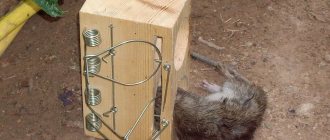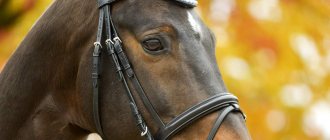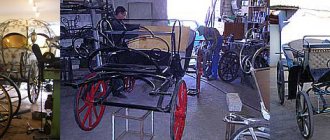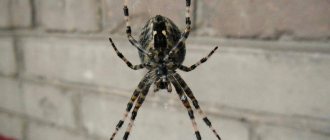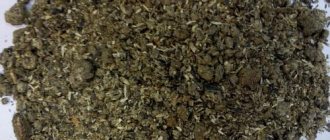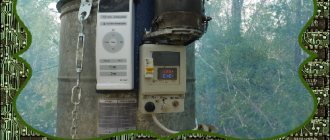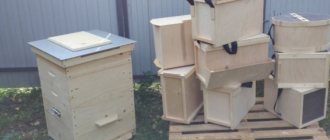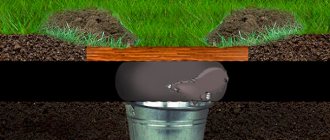To make a trap for bed bugs and thus get rid of these parasites, you do not need large financial expenditures; it is enough to use available means and instructions for their use.
There are many ways to combat nasty home parasites. For example, you can make a trap for bed bugs with your own hands, especially since in the modern world it is not so difficult.
Of course, it is problematic to do without purposeful extravagance here. But know: the right practical actions will definitely lead to triumph.
Is it even worth doing this?
Of course, before you start making snares, you need to determine whether there are unwanted animals in the apartment.
The following identification phenomena will be characteristic evidence of an extraneous presence:
- Blackish-red spots on bedding, clothing, household items, or walls. These are traces of enemy droppings. These spots can also be bedbugs themselves, crushed by something heavy.
- Bites on the skin. Body itching is not good! Obviously, you somehow irritated the outer skin or someone else did it. Remember if there was any tactile contact with nettles, or if you took any suspicious medications that could cause an allergic reaction. When there are a lot of spots and they come in a chain, then with one hundred percent certainty it should be said that this is the work of the proboscis of bedbugs.
- Specific smell. Sniff the spots mentioned earlier. Having sensed the miasma, conclude: parasites. This sign is considered the most accurate.
Types of compositions and methods of their preparation
Making your own glue is quite easy! Until recently, our parents and grandmothers prepared the adhesive mass themselves before gluing wallpaper, without having ready-made mixtures on hand.
It is important to note that environmentally friendly paste, made at home, still holds its own today. Using this composition, you can rest assured that the glue used is safe.
The consistency and thickness of wallpaper glue should be chosen depending on the type and weight of wallpaper used. Based on this, the volume of added water is also selected.
The composition of wallpaper glue may include flour and starch , and combinations with one product are not excluded - it all depends on the type of canvas and the mixture of what density they need!
If it is necessary to strengthen the adhesive properties of homemade paste, you can add a little wood glue or PVA . They will make the adhesive mass more resistant to moisture.
What about ready-made traps?
So far, it is not always possible to buy a bedbug trap in household chemical stores. Domestic manufacturers of insecticides, aerosols, and poisonous powders are not really interested in them. You have to look for funds on foreign sites / be guided by the hands and mind given by Mother Nature.
If you are lucky, you will find Combat based on hydramethylnon or Bed Bug Beacon on the shelves. The problem with "Kombat" is that it is designed for chance. A creeping tomboy can either climb into a trap or not pay attention to it. The last “trap” is based on the spread of carbon dioxide. Bed Bug Beacon is too expensive, so it is better to make a “reproduction” in person.
Starch-based composition and mixed appearance
Pour the starch mixture into hot water in a thin stream
Starch-based glue at home is made in a similar way to the flour type. Proportions for its preparation: 1 to 10, i.e. To prepare 1 liter of paste you will need 100 g of potato or corn starch.
You can improve the composition by mixing flour and starch. This paste is prepared by brewing:
- in a small bowl, mix 1 cup flour and 2 tablespoons starch;
- boil 2.5 liters of water and leave on low heat;
- when the water in the pan has boiled, pour cold water in a thin stream into the bowl with starch and flour and mix thoroughly;
- Pour hot water into the resulting mixture, stirring constantly, let it boil and remove from heat;
- After cooling, the composition must be strained. For more information about cooking, watch this video:
Many people believe that the paste must be boiled. This recipe does not require boiling the mixture, you just need to bring it to a boil and immediately remove from heat.
Before pasting the walls, be sure to prepare the necessary tools and read the tips on how to properly glue wallpaper.
Carbon dioxide
Carbon dioxide is not only food for flora, a preservative, a forerunner of lemonade, but also a method of fighting against bloodsuckers. It is often not very difficult for the average person to obtain carbon dioxide. Potential retail outlets: various hardware stores (often used for welding work). Approximate speed – 180 ml/min.
Once you have acquired the product, get a two- or three-liter container. It should have two or three exits. If there are none initially, try making exits yourself. For this purpose, say, an oblong food container is quite suitable.
You will also need a deep plate. Pour some talc (a mineral used by athletes in weightlifting) into it. Place the plate in the container. Before going to bed, release carbon dioxide through one of the holes. Bedbugs sense it very well (it is secreted by human lungs).
Hoping to get food, the creatures run towards the smell. Crawling through one of the holes, they fall into the talc and are immediately killed. This is not particularly difficult to pull off, the main thing is to tightly place the plate with the contents inside the container. It is desirable that it adjoins the internal walls.
You can also make a bed bug trap using yeast.
Chemicals for DIY use
On the shelves of specialized stores there is a large selection of chemicals for bedbugs. You can choose a preparation that is suitable for you, which can be mixed with wallpaper glue for prevention or disinfection against pests during repairs. Using chemical insecticides is a very effective method for eliminating unwanted insects in your home yourself.
What can be added to wallpaper glue against bedbugs:
- Chlorophos. The composition contains toxic substances, so the insecticide must be stored in a tightly closed container, in a place where there is no access for children and animals. Add this poison to the glue in a ratio of 1:4. When using chlorophos, you must not forget about your own safety. Only after the glue has completely dried, so that the wallpaper does not peel off, should you open the windows for ventilation. Be sure to work in specialized clothing, gloves and a gauze mask.
- Karbofos. The product is quite effective, but has its drawbacks: it has an unpleasant, pungent odor. Dilute with glue in a ratio of 7 grams per 1 liter. Mix thoroughly and you can start gluing the wallpaper. After finishing work, it is worth ventilating the room for 4-6 hours. The clothes and gloves in which the work was carried out should be thrown away.
- Mikrofos. The product is odorless and does not harm human health in any way, since the insecticide has a low level of toxicity. The drug can be used to combat not only bedbugs, but also ants and cockroaches. It is recommended to mix the product with glue in a ratio of 1:20. The drug does not leave marks on the wallpaper.
- Tetrix. Another very effective remedy. It has a liquid consistency and is sold in a 250 ml jar. You can buy Tetrix in a specialized store or in a veterinary store. Use 100 ml of product per 1 liter of glue. The solution has an unpleasant odor.
When working with your favorite drug, do not forget about basic safety precautions: work in a special suit and gloves, which you need to throw away after use, a respirator or a mask made of gauze and cotton wool. Keep children and animals out of the room, as some products are toxic. After the glue has completely dried, it is worth opening the windows for 2-5 hours for ventilation. One of the big disadvantages is that when using an insecticidal agent, stains may remain on the wallpaper, but such situations happen quite rarely.
Yeast with a "small addition"
The trap for home bugs with yeast and carbon dioxide is in no way inferior to the previous one in popularity. To cleverly create a mixture, you will need ordinary yeast and dry ice. The first can be purchased at any gastronomic department store, and the second is easiest to get in online stores.
It’s also worth trying to ask around in stores that sell processed foods and ice cream. It’s also possible to find the product in a pharmacy.
In the same way, arrange dry ice comfortably in a bowl or plate. Then place it in an approved food container. Using a tube (the material is not important), add yeast to the resulting “system”. They are excellent at releasing carbon dioxide. Read about what bedbugs are afraid of in a separate article!
Popular questions
Is it worth using devices if there are a large number of bedbugs in the house? If the home is heavily infested, they can be used, but only in combination with other insecticides that have destructive properties for bedbugs.
What traps are best to use to prevent bedbugs from entering? In order to prevent the appearance of parasites, it is recommended to use devices and agents that have repellent properties. For example, dry chamomile or cloves scattered in secluded corners of the room will help repel insects.
Are traps safe?
Most products and devices of this kind are non-toxic and do not contain toxic substances. Accordingly, their use will eliminate the risk of poisoning people and domestic animals. Self-made traps are especially safe.
How to force bedbugs to glue their flippers together?
Typical sticky traps help control swarms of flies or mosquitoes. Nobody said that it is forbidden to use them against vile vampires. It is necessary to carefully cover the sides of the beds so that any bug crawling on you will be caught due to your small mind. Sticky bedbug traps are a cheap and cheerful way to achieve restful sleep.
There are many other ways to get rid of bedbugs - keep this in mind.
By the way, it is also advisable to install something similar inside sofas. Bed bugs love to live between the folds of furniture, so it is possible to cover an entire den. True, the eggs, unfortunately, will not be destroyed. Double-sided tape can also be recycled. It's just as easy to apply.
Starch paste solution: mixed type
Starch-based wallpaper glue is made in the same way as flour glue. To prepare the mixture with your own hands, you will need a proportion of 1:10, in other words, for 1 liter of adhesive mass you need 100 grams of corn or potato starch.
You can improve the paste by mixing starch with flour. Preparation procedure:
- In a small container, stir together a couple of tablespoons of starch and one cup of flour;
- Bring 2.5 liters of water to a boil;
- Pour cold water into a container with flour and starch in a thin stream and mix the mixture well;
- Add hot water and bring to a boil, remembering to constantly stir the mixture;
- After boiling, remove the solution from the heat and let it cool. Strain at the end. More detailed cooking instructions can be found in the following video.
Many people assume that to make glue you need to boil it. In our case, it is not necessary to cook the paste; it is enough to simply bring the composition to a boil, after which you can immediately remove the solution from the heat
Bean tops
Bean leaves have small hairs. They are difficult to notice, but when palpated or stroked, their presence is recognized. Having wandered onto such an inconspicuous-looking leaf, the animal is completely deprived of control of the musculoskeletal system. Even some expensive, high-quality bedbug traps can't do this!
This representative of the plant kingdom is actively used by Serbs in their residential buildings. Moreover, large companies that produce insect repellent chemicals are aware of the properties of bean leaves. You can try laying the sheets in corners, along baseboards and under the bed yourself.
You can make a trap for bed bugs from ordinary plastic bottles, which people often throw away because they are not needed.
Features of the pest
Officially, insects of this species are called forest tree shield insects. The insect is popularly called the stink bug. This name comes from the strong odor that remains wherever the bug crawls. Moreover, the smell remains for quite a long time. Tree stink bugs do not eat berries, but their smell becomes the reason that it is impossible to use the crop: if a green bug settles on a raspberry, the aroma and taste of the fruit will be completely spoiled. The body of an adult tree shield is oval and wide, and the head is small, with long antennae and a proboscis. The dense shell, which consists of individual scales, reliably protects the insect. The color of the bug changes depending on the season: in early spring it is light green, like young leaves on trees, towards autumn it becomes dark green, and when the leaves begin to turn yellow, its color changes to brownish-yellow. Thus, the color serves as protection from predators.
Plastic bottles
The easiest way for insects to make a home is in the halls of your bed. Among their favorite places are mattresses and pillows. During the night, they either crawl out of camps set up directly in the bed, or climb onto it with the help of their legs. We recommend ironing bed linen more often and washing it in a machine. But with the legs...
To reduce bedbug traffic at night, you need to get four plastic bottles.
Once you have them, start taking action:
- Trim off two-thirds of each bottle (counting from the neck). The bottom will serve as a tray for the legs of your bed.
- Sand the edges with sandpaper. This will make it easier for the hostile people to lose stability and slide to the bottom.
- Take some oil into bottles. Sprinkle it all with flour or powder. Ready! By the way, you can use water as an alternative to butter and flour. By pouring it in sufficient quantities, you will protect yourself from attacks on unprotected areas of the skin. You can go further and attach some adhesive tapes to the sides of the bottle, or simply wrap the legs with these tapes.
- The morning has come, the sun is shining, the grass is swaying, the bugs are in torment. Romance! Based on observations, we can conclude: have the parasites reached you?
Important note: bedbugs love to climb walls. It costs them nothing to climb onto the ceiling and from there jump on a sleeping person. This rarely happens, but keep it in mind!
Preparing walls for wallpapering
Removing unwanted insects largely depends on how thoroughly you treat the room. It is recommended to start disinfection by treating the walls and ceiling. Before re-pasting the wallpaper, we prepare the walls. Initially, you need to get rid of the old wallpaper, remove it from the wall and take it out of the room as quickly as possible. Then dilute the solution for treating the walls in a basin. To do this you will need:
- one alkaline 72% laundry soap,
- 1 teaspoon of soda,
- 1 liter of hot water.
Grate the soap on a coarse grater and fill it with hot water, then add soda. Mix everything and leave for 20-30 minutes until the mass becomes homogeneous. With this solution you need to thoroughly wipe the walls, ceiling and all places where bedbugs have been found to accumulate.
How to make an ultrasonic trap?
Ultrasonic bedbug trap is a reality of this century. It's worth considering, but it's not that simple (more on that later).
The frequency that the device emits is not perceived by humans. The device does not have a negative impact on us. With our smaller enemies everything is somewhat different. The disgusting sound causes bedbugs to become disoriented in space. As a result, they cannot smell the food source. At least this is what the manufacturers proudly say.
Repellers have an amazing property: coverage area. It is clear that all kinds of cracks or ventilation are not considered obstacles for them. Unlike pesticides, there is not a single bad smell for you here. Plus they consume little energy when running on mains power.
The following ultrasonic devices are quickly sold out: “Typhoon”, “Tornado”, “Banzai”. The controls are easy to understand; just read the instructions carefully. The creators, as a rule, indicate all the necessary information there.
Reviews are varied. The downside is that the oviposition is not destroyed by repellers. And to be honest, such means are more intended to get rid of cockroaches. In addition to them, rats also suffer greatly. Bedbugs are not so afraid of this approach from humans.
Perhaps the people who speak out approvingly were seriously involved in chemical harassment before using such devices. As a result, the arthropods could not withstand such attention to their individuals and disappeared. And just at the same moment some “Typhoon” was purchased. The conclusion emerged immediately.
If you are determined to fight against mosquitoes and mosquitoes, then be sure to purchase this product! You can, of course, try to completely eliminate the bedbugs, but...
Advantages of homemade glue
The shelf life of this glue is very short.
In addition to the obvious advantages of simplicity and economy of preparation, homemade wallpaper glue has many other advantages:
No. Excellent adhesion Using paste, you can glue wallpaper to any type of surface, even if it is treated with drying oil or oil paint.
| 1 | Safety and environmental friendliness | All components of the paste are not only safe, they are actually edible. This glue can be safely used in children's rooms and bedrooms. It will not cause allergic reactions, does not emit harmful substances or unpleasant odors. Absolutely harmless if it comes into contact with the skin during operation. |
| 2 | Versatility | Suitable for use with any type of wallpaper with the exception of heavy types. Dried glue is not inferior in strength to industrial mixtures. |
| 3 | Easy to remove | Despite its strength, wallpaper glued with paste can be easily removed from the wall, just wet the canvas. |
| 4 | Not aggressive | The paste does not destroy the structure of paper wallpaper and does not cause soaking, which reduces the risk of damage to the canvas when sticking to the wall. |
| 5 | Not noticeable | The paste solution has a slightly cloudy whitish color; it disappears when it dries. Once on the wallpaper, it leaves no traces. |
Home-made paste also has disadvantages, which would be unfair not to mention. The main problem is the fear of water.
Do not use glue based on flour or starch in rooms with high humidity.
To make it more resistant to moisture, you can add PVA glue to the paste at the rate of 100 ml per 5 liters of finished glue. This composition can be used to glue non-woven or paper wallpaper.

